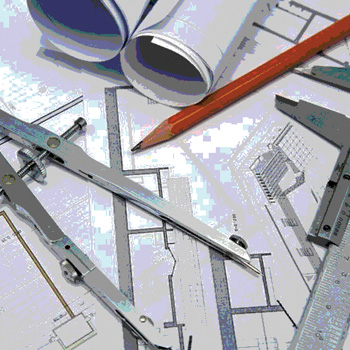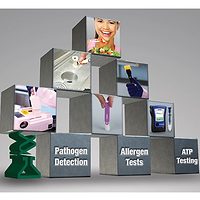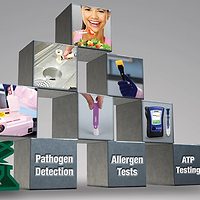Principles of Environmental Pathogen Control

Before discussing focused pathogen environmental hygiene programs, I want to share a few key points about the two pathogen incidents in which I had a concentrated level of involvement. The first incident occurred December 24, 1986, when Nabisco Brands announced a full recall of all Baby Ruth candy bars manufactured at its Franklin Park, IL, plant due to Salmonella contamination. For the company and for me as a Nabisco sanitarian, this was a painful experience, as the nationwide recall required significant follow-up visits at the plant location. Fortunately, no illnesses were linked to this incident. However, the product was off-shelf for months, as a hygienic restoration of the facility was planned and executed. This came at a significant cost to the company and consumed months of time from internal resources, as the plant was prepared for a restart. The second incident was in the late 1990s when the meat industry had several ready-to-eat (RTE) Listeria monocytogenes product contamination issues that generated recalls, including Thorn Apple Valley, Sabrett hot dogs, Gaspar’s sausage, Dearborn sausage, Bilmar Foods and Oscar Mayer. These were each serious events, given that they occurred close in time and had significant impacts on the health of consumers, on the sales of RTE meat products and on the RTE meat industry’s credibility with consumers.
Two of the RTE meat recalls that had more impact to me were Bilmar Foods (latter part of 1998) and Oscar Mayer (January 1999). The consumer impact from the Bilmar incident comprised 15 deaths and six miscarriages. This was devastating for those consumers and their families. The most memorable to me was the loss of Helen Bodnar, who was in her 70s. Her husband of 53 years, John Bodnar, appeared in a 20/20 episode with Arnold Diaz and shared his heart-wrenching story. This was memorable to me, for in John and Helen I saw my parents, who were in a similar place in their lives and marriage. It was a powerful and unforgettable connection and taught me the critical responsibilities that we in food safety and the industry have for protecting the health of consumers. At the time, I worked at Kraft (Oscar Mayer’s parent company) and was heavily involved in remediation; I led an initiative called Project Forward whose mission was to drive improvements in preventive plans across Oscar Mayer initially and then across other microsensitive product categories at Kraft.
What Can We Learn?
These events provided an unfortunate but rich learning experience that helped shape my perspective on pathogen control, which, when implemented, provides a holistic and disciplined approach to model a combination of preventive plans that reduce risk. Ultimately, this approach helps avoid failures in environmental programs that otherwise could result in pathogen-related recalls and potential outbreaks.
Another learning opportunity from these pathogen-related events in a short period was the sales impact to RTE meat products across the industry. The largest sales losses were to hot dogs and lunchmeat, and not just with Bilmar and Oscar Mayer, but with all processors and brands of hot dogs and lunchmeat. It took 18 months for sales to recover and return to normal growth levels typical for that time. The key lesson was that the meat industry at the time was known to produce unsafe foods. As a result, the meat industry needed to change. It did just that, with companies working precompetitively to improve food safety for the betterment of both the industry and consumers. Best practices, shared learnings and product reformulation began to reshape the industry. Looking back, this was a phenomenon that other food industry segments later emulated.
With the leadership and support of the American Meat Institute (AMI), companies worked together to share critical learnings about Listeria in the environment, methods of control in processing plants and food safety-related product formulation. AMI was visionary in working with processors and suppliers for the common good. A good example is the AMI Listeria Intervention Course that started in 2002 and is still offered today at regular intervals. This course looks at all principles of the Listeria control equation, with hands-on workshop activities to help develop a comprehensive environmental monitoring program, in addition to learning about sanitation and sanitary design. Another major AMI initiative was to develop an industry team (which I had the privilege to lead) that focused on sanitary equipment design. Later, another AMI team focused on facility design.
Equipment suppliers, engineering firms that designed food plants and quality and sanitation managers worked together. It was a perfect time for all of us to share what we knew precompetitively. Sometimes, it takes a storm or crisis to elevate expectations and cause rapid evolution. The pathogen concerns did just that and the industry responded with the needed changes. Today, the meat industry is in a better place for it, and fortunately, many of these learnings have spilled over into other food industry segments, such as low-moisture foods, dairy and produce, reaching original equipment suppliers for all industry segments.
Where to Begin?
When first confronted with a pathogen problem in a facility, it is hard to pinpoint an exact root cause from so many potential sources. At the time, it was necessary to take a holistic view of all conditions and to communicate these to the Oscar Mayer team: putting potential sources into perspective with the ability to zero in on program improvements while keeping it simple and understandable. The approach taken was to put the control components in the form of an equation equaling pathogen control. When I presented this equation to the Oscar Mayer team, it was seen as a practical, true and easy way to communicate. Later with AMI, this equation was used in the Listeria Intervention Course and by other companies who partnered with AMI to share information on Listeria control. This approach helped the industry understand what was important and where to focus efforts. It enabled an understanding of diverse risks that needed to be controlled and the solutions needed to obtain that control. Since then, the approach continues to be used in many food industry segments. The principles and the equation remain consistently applicable across all categories; most importantly, it is a road map to control pathogens in the plant environment.

The equation is presented in Figure 1.
Let’s take a look at each of the six components of the pathogen control equation, review the importance of each and assess how each component helps eliminate/control the presence of pathogens. It is also important to look at each of these principles to help compensate for the weaknesses of any one component. For example, we know that equipment design is not perfect in the meat or other food industries; in fact, in some cases, it is quite poor. In the case of poor equipment design (Principle 4) where the defects might not be repairable in the near term, you could enhance the sanitation procedure (Principle 5) and the tear-down frequency, yielding control of pathogens. This example illustrates how the principles can work together to maintain control of equipment or the environment regardless of design flaws. This allows for a holistic approach and focuses on getting the right solution while engaging all control principles.
The Pathogen Control Equation Principles
Principle 1: Separate Raw from RTE
History shows that there is a greater likelihood of finding spoilage organisms or pathogens in uncontrolled plant areas. By controlled, I mean maintaining a clean, pathogen-free environment. Maintaining control could require placing restrictions on who can enter or implementing traffic hurdles for people as they come into the area, or separation by walls from one area to the next if they have different hygiene levels. Finally, there could be a benefit to having separate air controls that provide positive air pressure in a higher hygienic zone, thereby forcing undesirable bacteria or dust from the high-hygiene to the low-hygiene care areas.
Let’s review a few of the key thoughts from above. First, what is a hurdle? This is a procedure/intervention that reduces the possibility that bacteria present in a lower-hygiene plant area will be carried into a higher-hygiene area. For example, in a meat or dairy plant, there are raw materials present prior to processing. To keep pathogens from infecting the high-hygiene area, we expect to see a hurdle, such as a wet or dry foot bath[1] so employees can sanitize footwear before entering a more sensitive area. If this were a dry plant, a dry foot bath or a change in footwear would be expected. Dry areas should remain as dry as possible. Another expected hurdle in a wet or low-moisture food facility would be for the employees to be hygienically prepared by wearing proper clothing, washing and sanitizing hands, and wearing sleeves, aprons, etc. If you are aware of pathogen contamination in a high-hygiene area through your monitoring program, you may need to think about decontamination as you exit the same area to avoid contaminating another area.
Principle 2: Follow GMPs
Following Good Manufacturing Practices (GMPs) is one of the most fundamental expectations in the food industry. GMP regulations 21 C.F.R. 210–211 have been part of the tenets of quality and safety over the years. These are practices that are or could be likely cross-contamination points if not followed. GMPs apply not only to personnel practices, which are the most commonly thought of when referenced, but equally to the many production practices that must be in compliance with a plant’s GMP program. Here are some examples: From a personnel perspective, it is critical to control and prevent pathogen spread in the facility by unclean hands. This is where the basics kick in—handwashing and wearing hairnets/beard nets, ensuring that we don’t cross-contaminate from a zone 3 (non-food contact) to a zone 1 (food contact) area. From a production GMP perspective, practices such as using specific tools in a high-hygiene area versus in a raw area are very important. For example, in raw areas, red totes and red shovels are normally used, whereas in a high-hygiene area, white totes or scrapers would be used. It is critical that both personnel and production practices work hand in hand to ensure an environment that minimizes cross-contamination from a raw to an RTE area, or from a cross-zone situation such as a zone 3 to zone 1. At times, we take these things for granted, but we shouldn’t. The best way to see good or bad practices and behaviors is to spend several hours on the production floor observing GMPs and production practices. Sanitation practices during the cleaning process are critical to prevent cross-contamination from zone to zone and must be monitored. A good example with sanitation is to see whether your cleaning practices are in sequence; if you use high-pressure water late in the cleaning cycle after equipment has been cleaned and sanitized, that would be another opportunity for cross-contamination. It is time well spent to observe sanitation operational practices during production. At times, you will be surprised by what you see. I have been doing this for 35 years and I am still frequently surprised!
Principle 3: Controlled Floor Conditions
Floors are generally considered a zone 3 area in a manufacturing plant environment, both in RTE and high-hygiene areas. In some cases, meat, produce and potentially dairy floors are moist, damp or just plain wet from manufacturing conditions. Given that moisture is needed to support the growth of pathogens of concern in the food industry, these areas become an ideal environment for microbial growth. Additionally, there tend to be many niche areas on the floors with dairy brick, epoxy or tile where organisms can harbor and grow. These can be source points for positive pathogen findings that could eventually migrate to zone 2 and zone 1 areas. Therefore, it becomes critical to maintain floors in a condition that can be cleaned and sanitized effectively and efficiently. This means a smooth surface with zero or, at worst, a minimal number of niches at joint areas, no spalled concrete and no cracked epoxy/urethane coatings where moisture could penetrate and resurface when pressure is applied to the material. Equally important is the need to monitor the microbial environment of floors and drains for pathogen activity. We will cover this in more detail with Principle 6: Environmental Monitoring.
Principle 4: Sanitary Design of Equipment and Facilities
Sanitary design of equipment and facilities is one of the most important principles from a strategic perspective. If we encourage processors to work with original equipment suppliers, we could change the future of sanitation and food safety in the industry. If possible and time permitting, I would recommend that all quality and food safety professionals and engineers who design equipment and facilities spend time during the sanitation process observing the challenges that sanitarians and sanitors face cleaning equipment that is not optimally designed for cleaning. This is an eye-opening experience, especially if you not only observe it but also try to clean it yourself. It also gives one the opportunity to understand the challenges that sanitors experience every day when a line goes down to be cleaned. That’s the best way to understand sanitary design and the benefits of an optimized design.
There are many sanitary design standards available today, some better than others, but in most cases, if you follow one standard and use it with the full understanding of sanitation and food safety risks after talking with the maintenance, engineering, sanitation, quality, food safety and production teams, you will be in a good position to have discussions with your equipment suppliers. Excellent partnerships and communication between processors and equipment suppliers can be the defining factor in the best designs.
Principle 5: Effective Sanitation Procedures and Controls
This is a critical area to focus on as you look at the total equation. All of the principles work together and establish a balance for the other principles, which may otherwise fall short of expectations. As an example, if you have a weakness in sanitary design (all facilities and equipment do), you need to compensate for substandard designs with enhanced cleaning procedures to ensure you clean hard-to-reach areas. This may need to be done daily or periodically—nonetheless, this offers a balance to deliver microbial control of pathogens and spoilage organisms. Likewise with separation concerns, if you have an issue with the separation of raw from RTE or high-hygiene areas, you may need to enhance the hurdle requirements at entry points and increase the frequency of deep cleaning or sanitizing of the floors to eliminate any contamination that may enter a room from poor separation of areas until you are able to provide complete separation.
The fundamental approach we use for sanitation procedures and controls is the “Seven Steps of Sanitation” for wet cleaning and a similar approach with different science for dry cleaning. These are both well-disciplined and thorough procedures that prevent potential cross-contamination from nonproduct zones to product contact zones. Without a disciplined approach, there would be much more cross-contamination in the industry.
Principle 6: Environmental Monitoring
This principle helps us measure how well we’re monitoring the facility environment. Call it our measurement meter for pathogen control. It lets us know whether each of our pathogen-prevention programs is effective. Furthermore, the goal of an environmental monitoring program is to get to know your environment. I typically recommend an aggressive program for all areas of the plant for at least 2 years. This provides a profile of what to expect at different times of the year, with different staffing, different weather conditions, during an adverse event (e.g., roof leak, drain backup) or during construction. Once through the 2-year period, you will know when a pathogen infection occurs that needs your immediate attention. Then, if you find a positive in a new area or are uncertain of the root cause, history can help initiate the best investigation and corrective-action techniques as well as pinpoint the potential source.
Monitoring is one aspect of the program; the other is corrective and preventive actions. When a positive is detected, actions must be taken in a timely manner to prevent the creation of a biofilm or niche that would be harder to eliminate. The effectiveness of the actions taken must be verified. If another positive is detected in the same area, corrective actions must be escalated to ensure the elimination of the pathogen and the conditions that allowed its
presence.
Summary
Pathogens occur naturally in the environment and can easily infect and populate in food plants. The pathogen control equation provides a holistic approach to preventive controls and its use has endured the test of time in the food industry segments where it has been applied.
An interesting and significant learning opportunity from the pathogen control equation, when fully implemented, is that in addition to controlling pathogens, it is good for quality and business. Experience shows that the shelf life of many microsensitive products has significantly increased, indicating that this process controls not only pathogens but also spoilage organisms. This process leads to satisfied customers with higher-quality products and reduced spoilage: a win-win for the processors and consumers!
Commercial Food Sanitation offers a Sanitation Essentials training course where we spend 5 hours in a hands-on team exercise to teach students exact steps, protocols and disciplines for doing the Seven Step Process. This is a great exercise that includes completing a design review of the equipment to be cleaned, creating Sanitation Standard Operating Procedures, dressing in sanitation wear and personal protective equipment and actually cleaning the equipment to a point that it can pass a preoperational inspection.
Joe Stout, R.S., is president of Commercial Food Sanitation LLC. He is known in the industry for his work in sanitation and hygienic design as the former director of global product protection, sanitation and hygienic design for Kraft Foods.
Reference
1. www.amif.org/wp-content/uploads/09-416.pdf.
Looking for a reprint of this article?
From high-res PDFs to custom plaques, order your copy today!





